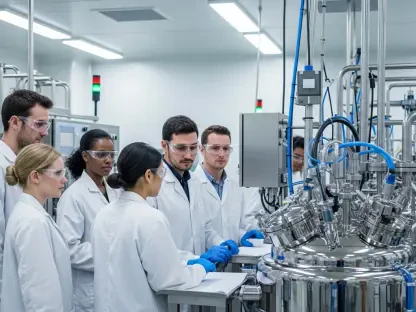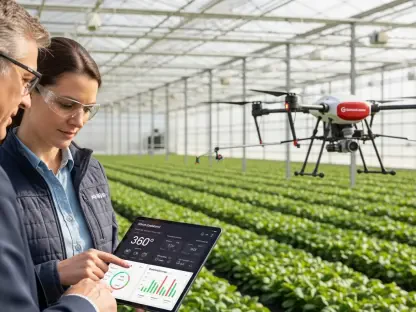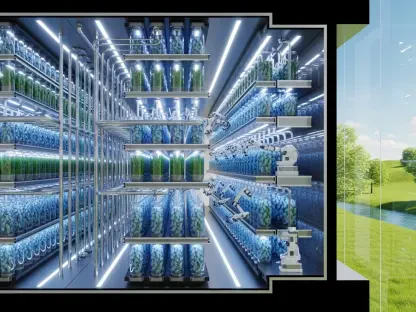In the intricate web of global industrial production, the chemical intermediates market stands as an indispensable pillar, facilitating the transformation of raw materials into vital products that shape modern life. These compounds serve as essential building blocks in industries ranging from pharmaceuticals to agrochemicals, polymers, and specialty chemicals, underpinning innovations that address pressing global needs. As the world grapples with rising populations, evolving healthcare demands, and agricultural challenges, the significance of chemical intermediates becomes even more pronounced. Projections indicate a robust growth trajectory for this market from the current year through 2035, driven by dynamic economic trends and technological advancements. This article explores the forces propelling this sector forward, the regional disparities influencing its expansion, and the hurdles that must be navigated to sustain momentum over the coming decade. It aims to provide a comprehensive overview for stakeholders seeking to understand the evolving landscape of this critical industry.
Forces Fueling Market Expansion
The chemical intermediates market is experiencing a surge in demand, primarily due to the escalating needs of key end-use industries such as pharmaceuticals, agriculture, and manufacturing. These sectors depend heavily on intermediates to produce high-value goods, from life-saving medications to essential crop protection solutions. With global healthcare requirements intensifying amid population growth and aging demographics, the pharmaceutical industry, in particular, is poised to drive significant demand for these compounds. This trend is compounded by the agricultural sector’s push for enhanced productivity to ensure food security, further solidifying the market’s growth outlook through 2035. The consistent reliance on intermediates across diverse applications underscores their role as a linchpin in industrial progress, ensuring a steady upward trajectory even amid economic fluctuations.
Beyond immediate sectoral demands, technological innovation plays a pivotal role in shaping the market’s future. Advances in production techniques, including automation and digital integration, are enabling manufacturers to optimize efficiency and reduce operational costs. These improvements not only enhance the quality of intermediates but also allow companies to scale production to meet rising global needs. Moreover, innovations are addressing the growing emphasis on sustainability, with new processes designed to minimize waste and energy consumption. This technological wave is transforming the competitive landscape, empowering firms to differentiate themselves through superior products and environmentally conscious practices. As the industry evolves, staying at the forefront of such advancements will be crucial for players aiming to capture a larger share of the expanding market through the next decade.
Regional Trends and Strategic Opportunities
A striking feature of the chemical intermediates market is the stark contrast in growth dynamics across different regions, with Asia Pacific emerging as a dominant force. Led by economic powerhouses like China and India, this region benefits from rapid industrialization, a vast manufacturing base, and supportive government policies that encourage investment. The availability of cost-effective labor and raw materials further amplifies its attractiveness, positioning Asia Pacific as a central hub for production and export. This momentum reflects a broader shift in global economic focus toward emerging markets, where burgeoning consumer bases and infrastructural development are creating unparalleled opportunities for expansion. For companies looking to capitalize on high-growth areas, establishing a strong foothold in this region is increasingly seen as a strategic imperative.
Meanwhile, North America and Europe present a different yet equally compelling landscape, characterized by a focus on innovation and sustainability. In these mature markets, stringent environmental regulations are driving the development of eco-friendly intermediates, pushing companies to invest heavily in research and development. The emphasis here is less on sheer volume and more on high-performance, specialized products that meet rigorous standards. This approach not only aligns with regulatory demands but also caters to a growing consumer preference for sustainable solutions. As a result, firms in these regions are carving out niches through cutting-edge technologies and green initiatives, setting themselves apart in a competitive global arena. The dichotomy between volume-driven growth in Asia Pacific and quality-focused strategies in North America and Europe highlights the diverse pathways to success in this market through 2035.
Overcoming Industry Challenges
Despite the promising outlook for the chemical intermediates market, significant challenges loom on the horizon, notably the volatility of raw material prices and supply chain disruptions. Fluctuations in the cost of essential inputs, often influenced by geopolitical tensions and variable oil prices, pose a persistent threat to profitability. Past global crises, such as the COVID-19 pandemic, have further exposed vulnerabilities in logistics networks, leading to delays and shortages that ripple through the industry. To mitigate these risks, companies are increasingly adopting diversified sourcing strategies and leveraging digital tools to enhance supply chain transparency and resilience. Such proactive measures are essential for maintaining stability and ensuring uninterrupted production, particularly as global demand continues to climb over the forecast period.
Another pressing issue is the intensifying regulatory pressure, especially in developed markets, to adopt sustainable practices. Compliance with stringent environmental standards often requires substantial upfront investment in cleaner production technologies and processes, which can strain financial resources in the short term. However, the long-term benefits—ranging from improved brand reputation to expanded market access—make this transition a worthwhile endeavor. Balancing the immediate costs of regulatory adherence with the pursuit of growth remains a delicate act for industry players. As the push for greener intermediates gains traction worldwide, those who successfully integrate sustainability into their core operations are likely to emerge as leaders. Navigating these dual challenges of volatility and regulation will be critical for sustaining momentum in the market through the coming years.
Shaping a Sustainable Future
Reflecting on the journey of the chemical intermediates market, it becomes evident that adaptability is a key theme in addressing past disruptions and economic shifts. The industry has demonstrated resilience by rethinking supply chain models and embracing technological solutions to overcome obstacles like global crises and raw material uncertainties. Regional strategies have also evolved, with Asia Pacific capitalizing on scale while North America and Europe prioritize innovation to meet stringent standards. These efforts have laid a strong foundation for growth, highlighting the sector’s capacity to transform challenges into opportunities for advancement.
Looking ahead, stakeholders must focus on actionable strategies to build on this legacy. Investing in sustainable technologies should be a priority, as environmental considerations will only grow in importance. Collaborative partnerships across regions can help balance disparities, combining the strengths of emerging and mature markets. Additionally, continued emphasis on digital tools for supply chain management will fortify resilience against future uncertainties. By aligning with these forward-thinking approaches, the industry can ensure sustained progress and relevance through 2035, contributing meaningfully to global industrial and societal needs.









